For the Vietnamese people, spring is the season of festivals. Annually, after Tet (the lunar New Year festival), festivals are held in all regions of the country, from mountainous and rural areas to modern cities, lasting until the end of March of the lunar calendar.
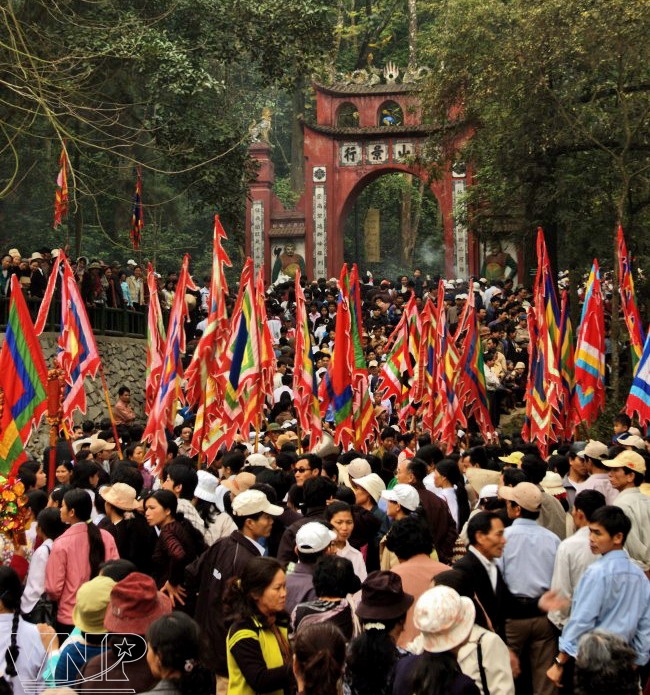
Hung Kings’ Temple Festival in Phu Tho. Photo: Ngo Du (VNP’s file).
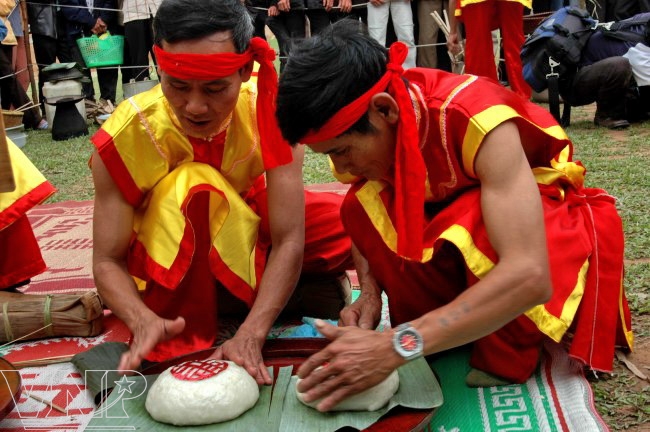
The glutinous rice dumpling making competition at Hung Kings’ Temple Festival. Photo: Ngo Du (VNP’s file) |
It is a time for people to not only commemorate the merits of genies, national heroes and their ancestors, but also to relax after a year of hard work. On this occasion, people often go out together to enjoy the peaceful and beautiful scenery and the pure atmosphere of spring.
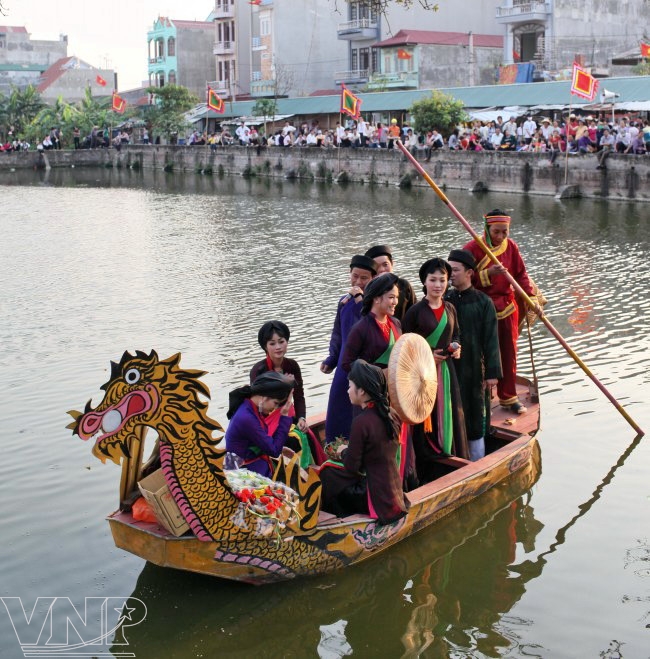
Quan Ho singing at Lim Festival. Photo: Hoang Quang Ha (VNP’s file).
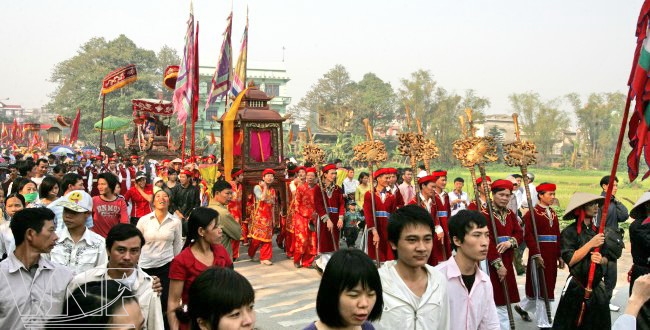
Lim Festival in Bac Ninh. Photo: Hoang Quang Ha (VNP’s file). |
According to researchers, the festival of each region has its own distinctive features, depending on the cultures and living customs of the people. In the whole country, the North has the most diverse festivals. There are several great festivals that are impossible not to be included like the Hung Kings’ Temple Festival, Saint Giong Festival, Huong Pagoda Festival, Yen Tu Festival and Co Loa Festival.
One of the most typical festivals is Saint Giong Festival held in Soc Son and Phu Dong Communes, which was recognized as an intangible cultural heritage of mankind by UNESCO in November 16, 2010. The Saint Giong Festival has existed for a long time and is held to commemorate Saint Giong who defeated the invaders to protect the country. He is one of the four immortal saints of Vietnam. The festival also shows the patriotic spirit to fight against the invaders of the Vietnamese people and express their aspiration for peace and prosperity. For this reason, over the years on January 6 and April 9 of the lunar calendar, villagers in the two communes of Phu Linh and Phu Dong are eager to organize the festival.
When spring comes, many other villages in the North simultaneously organize their festivals. Each festival presents its own features, creating the cultural identities of each region. For instance, Co Loa Festival is unique with a competition in archery. Do Son Festival is famous nationwide for its buffalo fighting competition and Lim Festival is full of the sweet lyrics of Quan ho (love-duets) songs.
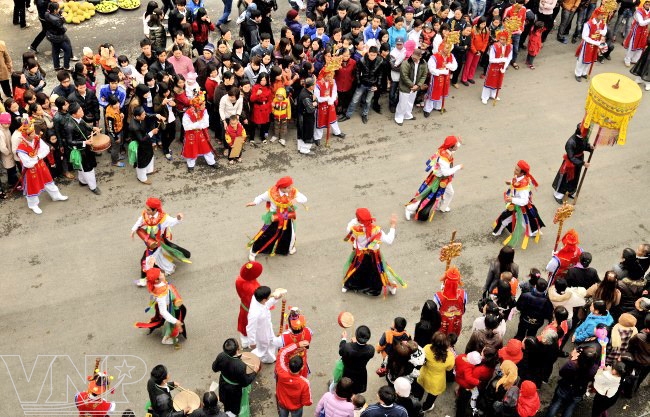
“Con di danh bong” dance at Trieu Khuc Village Festival in Thanh Xuan, Hanoi. Photo: Tran Thanh Giang (VNP’s file)
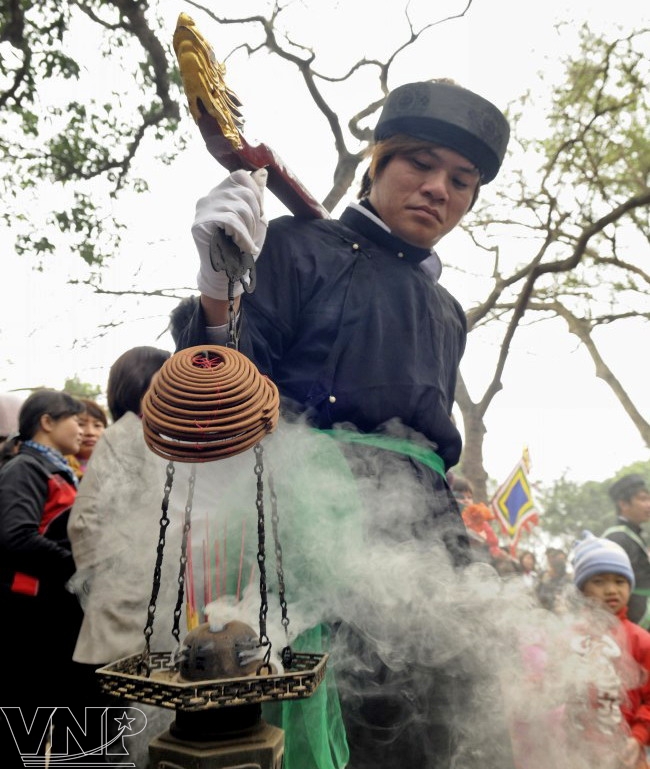
Rice-cooking competition at Trieu Khuc Village Festival in Thanh Xuan, Hanoi. Photo: Tran Thanh Giang (VNP’s file)

Ba Chua Xu Festival in An Giang. Photo: Huu Thanh – Minh Quoc (VNP’s file).
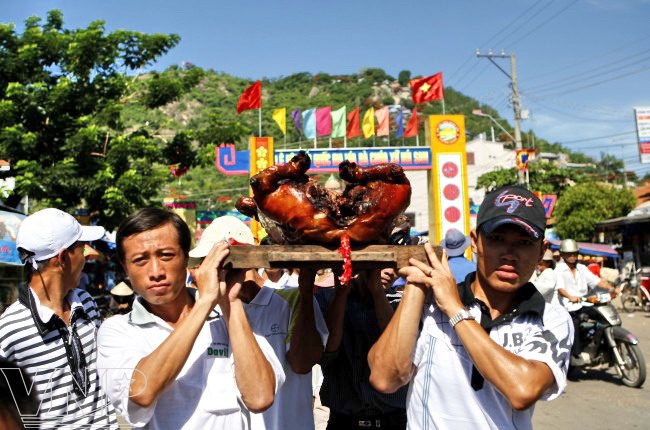
People offer foods to Ba Chua Xu in An Giang. Photo: Minh Quoc (VNP’s file). |
Unlike the festivals in the North, the festivals in the Central region and the South are related to religion, professions and places, such as Land Mother Festival in An Giang and Ba Den Mountain Festival in Tay Ninh.
Among the festivals, the most important and sacred one of the Vietnamese people is the Hung Kings’ Temple Festival, also called the ancestor’s death anniversary. The festival is recognized as a national holiday by the state. The festival is held between March 8-13 of the lunar calendar at Hung Kings’ Temple Festival in Phu Tho Province and the main festival day falls on the 13th. The festival is dedicated to the Hung Kings who founded and constructed the nation. It is a fine custom of worshipping the ancestors of the Vietnamese people. With its great values, Vietnam has built up a profile to submit to UNESCO to recognize “The religion of worshipping Hung Kings” as an intangible cultural heritage of mankind.
With nearly 8,000 festivals, particularly those festivals held in the spring, Vietnam deserves to be called the country of festivals. It is not only a precious cultural treasure of the Vietnamese people but also has a great attraction to those who want to learn about the culture and customs of Vietnam.
Story: Thong Thien - Photos: VNP’s file